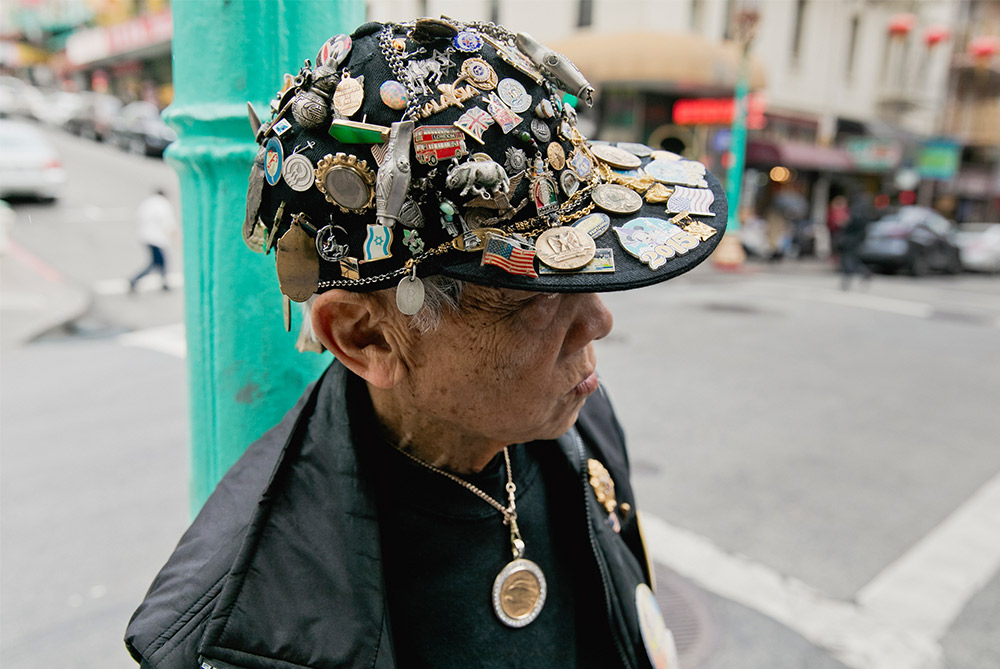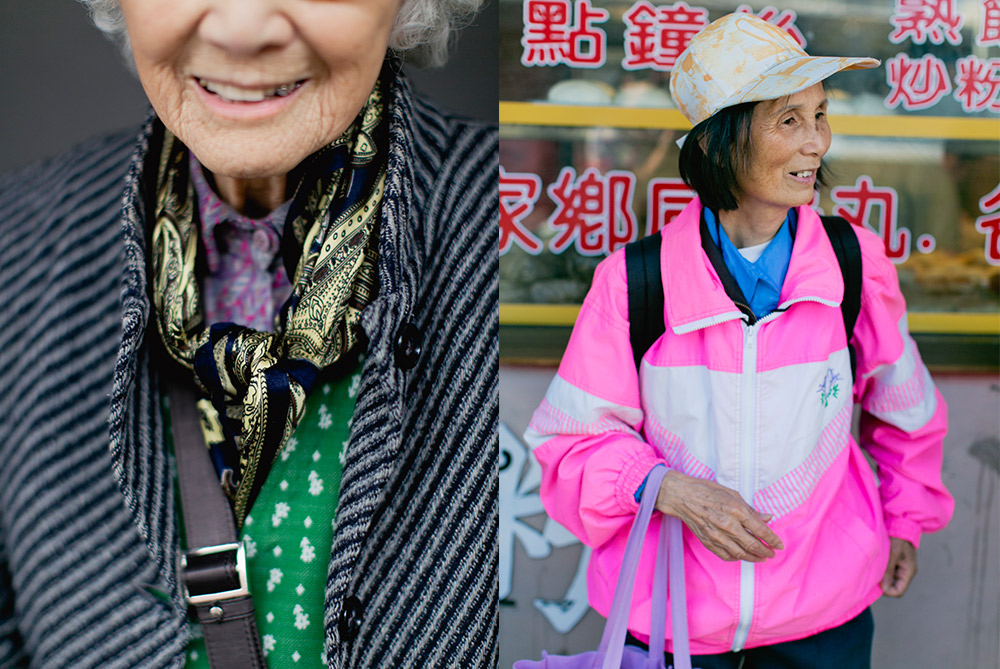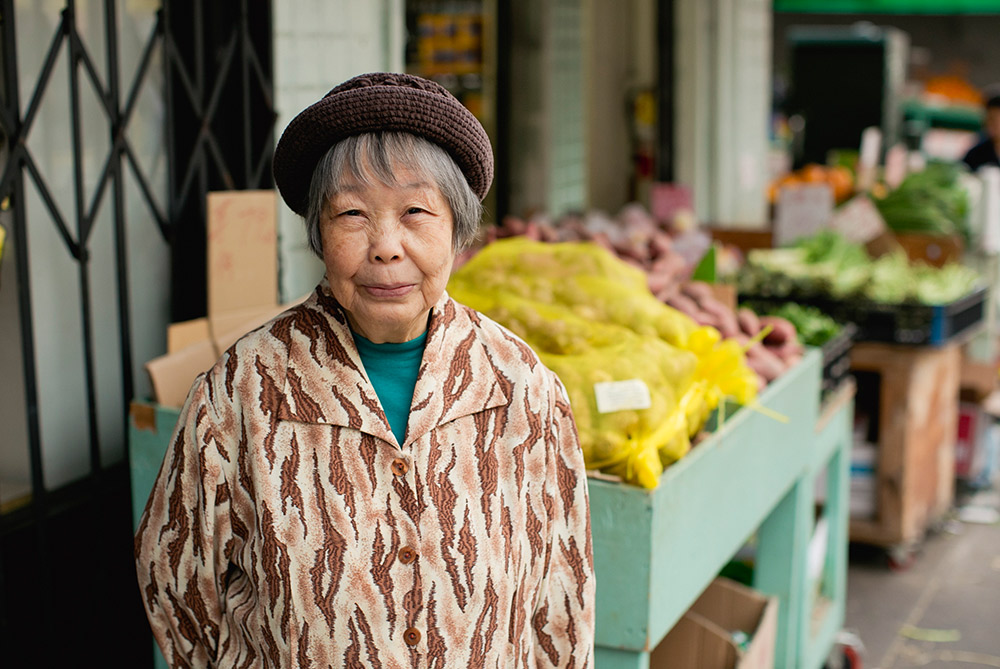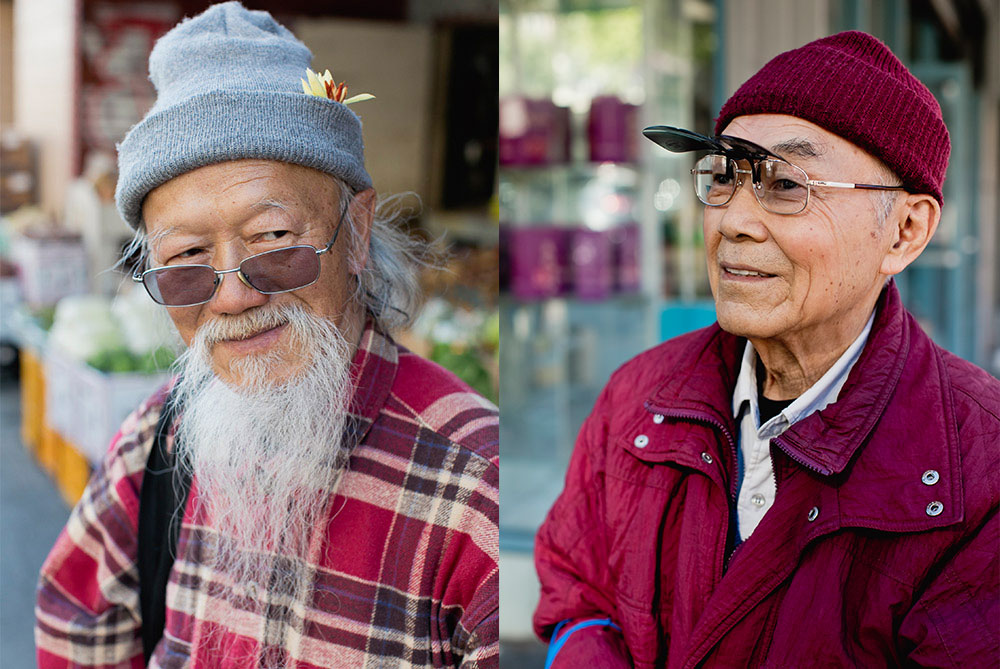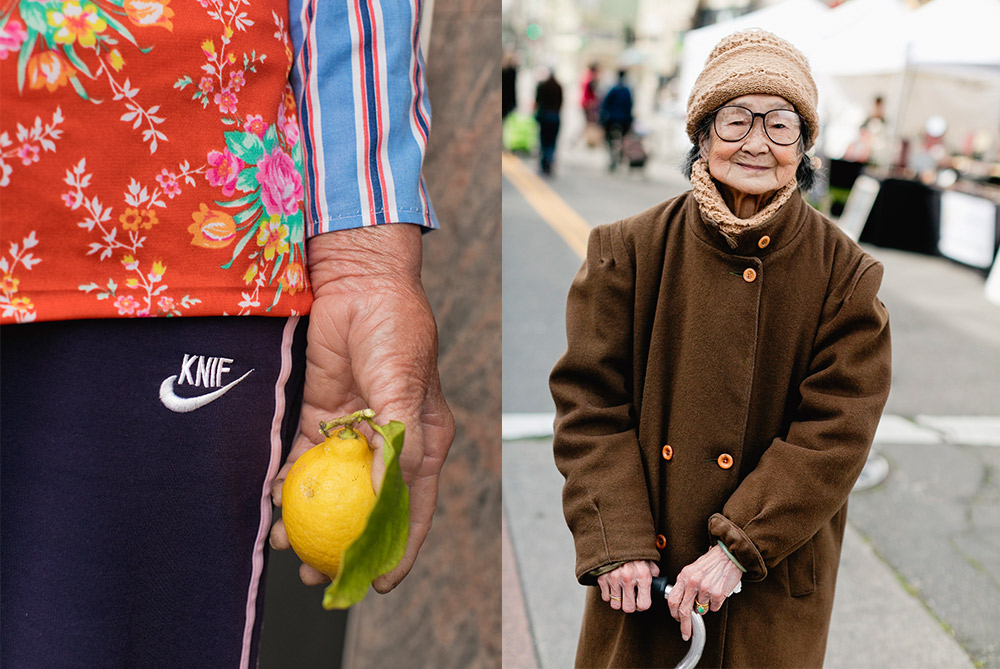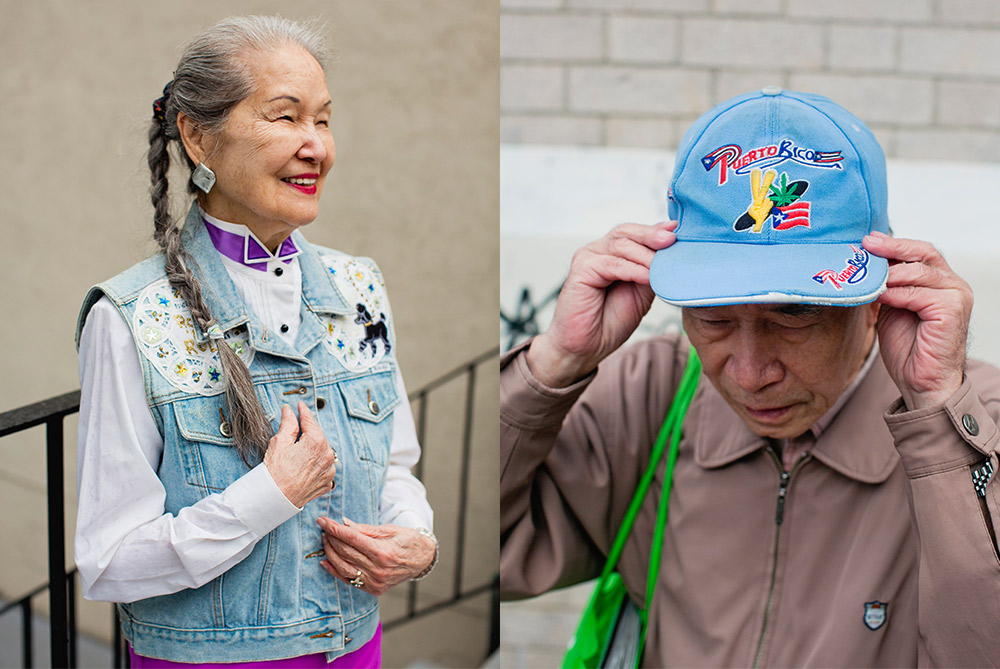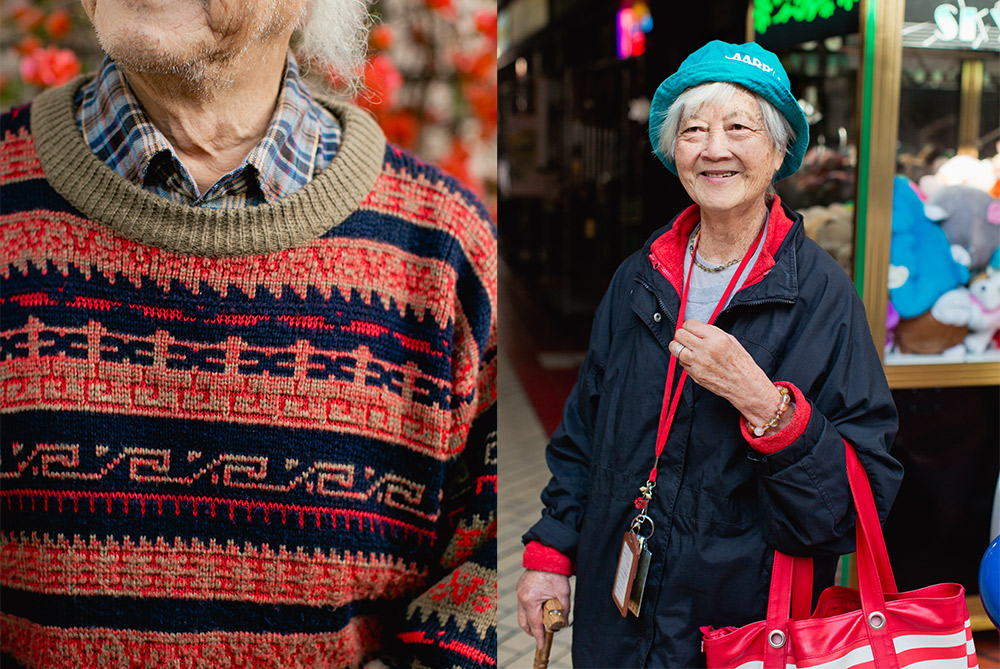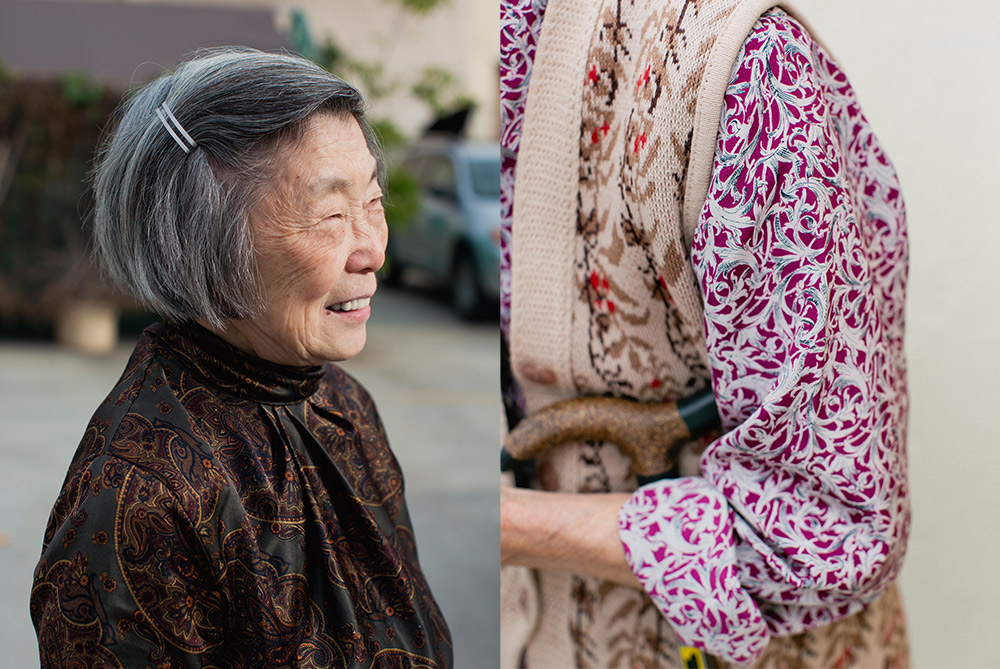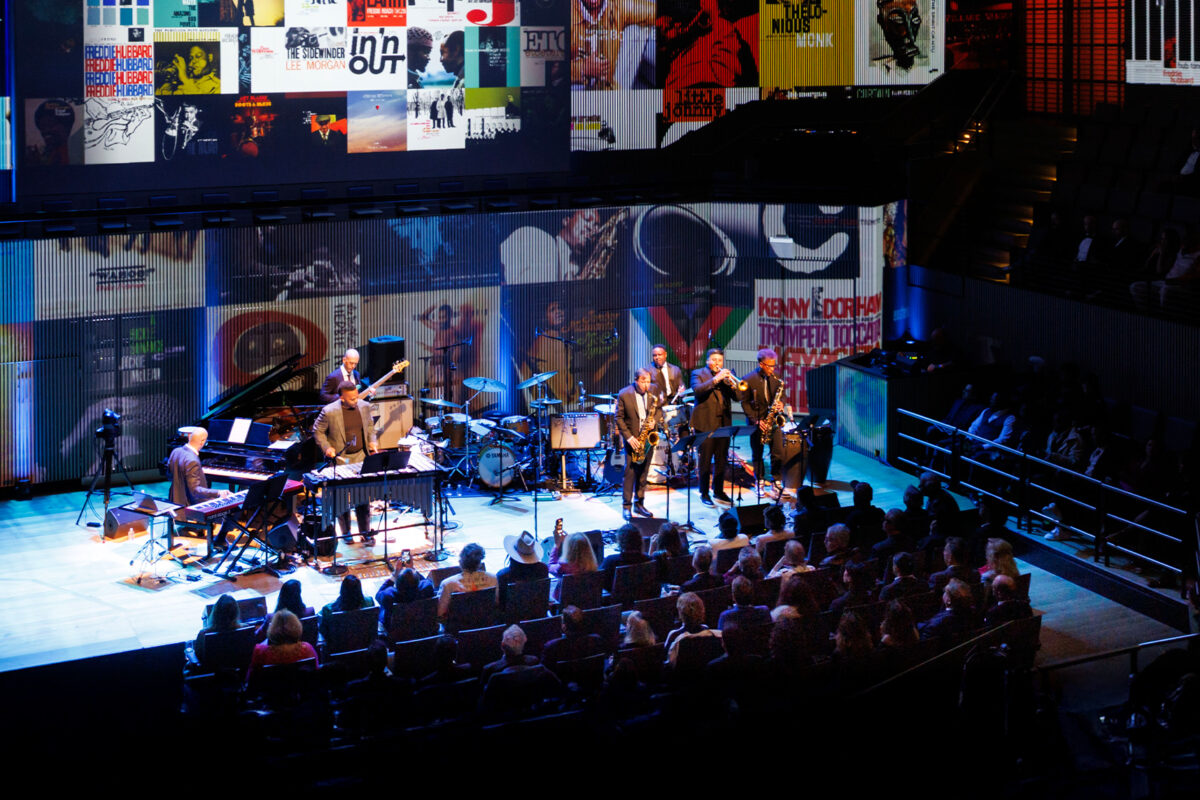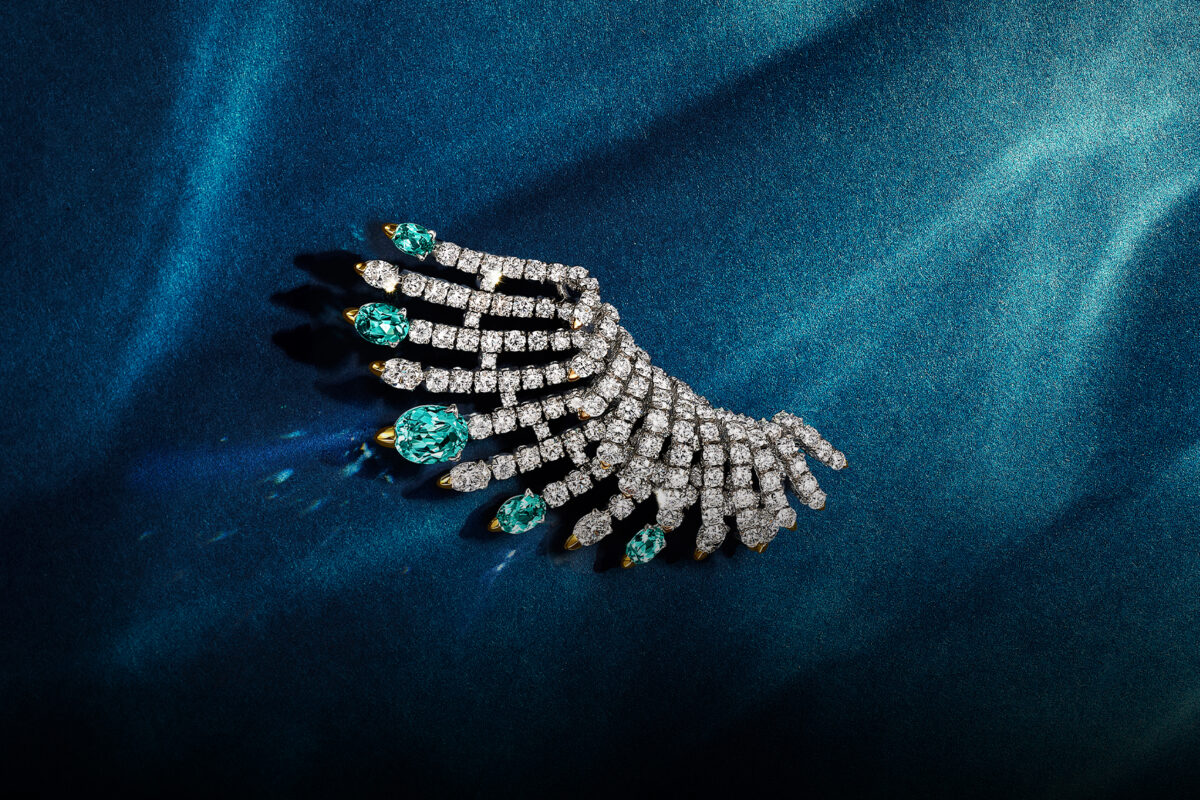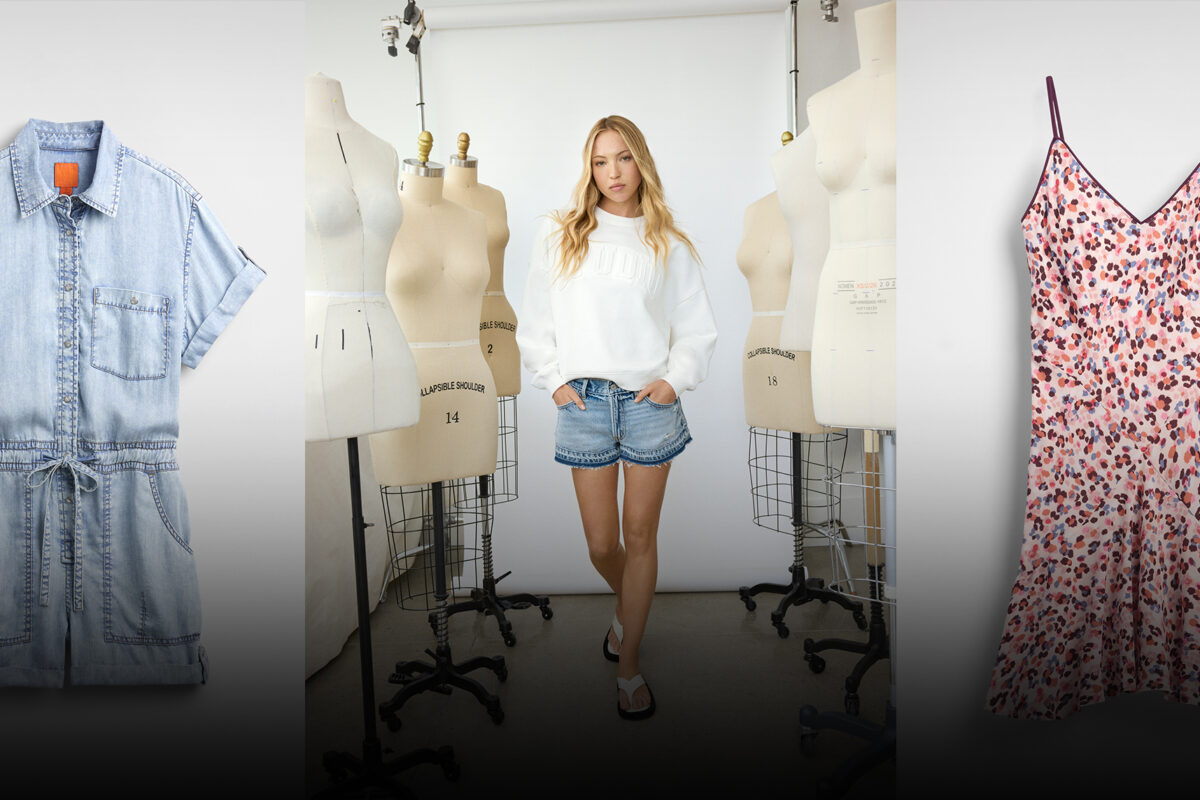New book Chinatown Pretty showcases locals’ snappy fashion choices in these historic neighborhoods
Words and photography by ANDRIA LO and VALERIE LUU
Spotted in Chinatown: a tightly trimmed silver bob and an ’80s print two-piece suit paired with jade green sneakers. Vintage painter’s cap worn askew, large tortoiseshell glasses, and a plaid fleece jacket layered over a houndstooth vest. Oversize black beanie, square-rimmed glasses, red Fair Isle sweater juxtaposed with a blue plaid shirt.
ANDRIA LO and VALERIE LUU, authors of Chinatown Pretty: Fashion and Wisdom From Chinatown’s Most Stylish Seniors (Chronicle Books). Photo by Phoebe Wong.
Sounds like a window display at Urban Outfitters, but it’s just a few of the outfits we’ve encountered on Chinatown pòh pohs (grandmas) and gùng gungs (grandpas). These seniors cause us to do a double, sometimes a triple take when we pass them in the crosswalks on Stockton Street, the catwalks of San Francisco Chinatown. Our hearts race when we see their inventive outfits and melt at the sight of the tender details — found ribbons tied onto walking canes and shopping carts, worn clothes that carry so much obvious history.
Chinatown Pretty — the term we coined to describe this unique style — is a delightful mix of modern and vintage, high and low, bold patterns and colors, and contemporary streetwear — like Nike sneakers or a Supreme hat — that takes the outfit to a whole new level. There are layers of knit sweaters and puffy coats (even in the summer) as well as five iterations of purple or florals — sometimes all in one outfit. These Chinatown fashion icons share some of the same aesthetic sensibilities as hipster bloggers—except they’re 80 years old! The seniors combine urban utilitarianism with unexpected sartorial selections that set our hearts aflutter.
Chinatown pretty is a delightful mix of modern and vintage, high and low, bold patterns and colors, and contemporary streetwear that takes the outfit to a whole new level
These outfits weave together the seniors’ diaspora: where they came from, what they did for a living, how they made the best of their circumstances. Like handmade items using fabric from the sewing factory where they worked, or hand-knit or hand-me-down clothing from friends and family. Their style speaks to their values: Why buy new clothes when you can wear gifted ones? Or custom clothes from Hong Kong, 30 years old but perfectly preserved? Combined with tender personalized touches, Chinatown seniors’ style contains so much ingenuity, flair, and beauty.
Left: Charlie keeps an umbrella strapped to his backpack so he can dance in the rain on a moment’s whim, just like Gene Kelly. Chinatown Central Plaza, Los Angeles, 2016. Right: Seamstress Hui Fung Dang made her red-piped velvet pants. Alpine Recreation Center, Los Angeles, 2016.
We started Chinatown Pretty out of admiration for this overlooked community, for both their fashion blog–worthy outfits and their active and independent lifestyles. We often asked ourselves, “What is this grandma’s story — and where did she get her shoes?”
Andria and I met in 2009 through the San Francisco food community — she was photographing the burgeoning street-food scene as I was starting Rice Paper Scissors, a Vietnamese pop-up restaurant.
Angie No Good’s accessories include gold jewelry and a hat encrusted with enamel pins from his travels. Grant Street, San Francisco, 2017.
Our friendship began on dim sum outings in San Francisco’s Chinatown; we bonded over a shared love of Chinatown fashion. Whenever we saw a pòh poh pairing floral prints with plaids or a gùng gung wearing a baseball hat embroidered with an unexpected catchphrase like “All I Do Is Party,” we would look at each other in astonishment, like “Did we really see that?”
There was a certain je ne sais quoi about their style, so Andria and I started approaching seniors on the street to learn more about their outfits. Our conversations became as much about where they came from as where they got their clothes. Their stories reflected some of our own history through their diasporas, humble beginnings, and struggle to create better opportunities for themselves and their children. As second generation Asian Americans, we saw this project as a way to connect to our families’ histories: Andria’s parents came from Boston Chinatown and Hong Kong; my family were Vietnamese refugees, and my stepfamily came from Hong Kong. The Chinatown seniors’ dress and demeanor also reminded us of our own grandparents — their permed hair, their sock-and-sandal combinations, and the way their expressions could switch between extremely tough (and intimidating) and overwhelmingly affectionate.
Dorothy G.C. Quock, better known as Polka Dot, wears an all-red outfit, a hair clip with Guatemalan worry dolls (a gift from her daughter) and cotton Mary Janes, to the tips of which she had affixed pom poms. Cameron House, San Francisco, 2017.
Over the past five years, we’ve learned that we’re not the only ones obsessed with Chinatown street style. In the comments on our blog and Instagram, many Asian Americans have told us that these photos and stories also reminded them of their own grandparents and expressed gratitude for seeing this generation represented. We’ve also heard from other city dwellers excited to learn more about neighborhood characters, and fashion enthusiasts who are now looking to their elders for style inspiration.
Chinatown seniors’ outfits serve as portals to heartwarming and inspirational life stories, and through our interviews with them in Chinatown Pretty: Fashion and Wisdom From Chinatown’s Most Stylish Seniors (Chronicle Books, $25), we hope to share their insight on how to live and dress during the golden years.
We’ve learned that we’re not the only ones obsessed with Chinatown street style. Many Asian Americans have told us that these photos and stories also reminded them of their own grandparents
• • • • •
SAN FRANCISCO CHINATOWN
Left: VALERIE LUU’s grandmother, Hoa Thi Nguyen, calls a dress shirt and slacks her daily uniform. Ross Alley, San Francisco, 2016. Right: Estelle Kelley completes her look with a white plaid coat from Kohl’s. Ross Alley, San Francisco, 2016.
San Francisco’s Chinatown is the oldest in the United States. It has served as a landing pad for immigrants since the mid-1800s, when laborers came to join the Gold Rush and work in accessory businesses like laundries, restaurants, and grocery stores. Within this neighborhood outlined by Broadway, Powell, Bush and Kearny Streets, buildings are in various states of old and new, and hundreds of Chinese businesses serve tourists and locals.
Chinatown bumps up against Italian restaurants and third-wave coffee shops in North Beach, San Francisco’s Little Italy, and gray high rises in the Financial District. It’s a wonder to see how neighborhood lines blur and how many different demographics intersect: Chinese residents, international tourists, and young professionals on their way to work downtown. Chinatown also features one of San Francisco’s most iconic features: rolling hills that leave us breathless — partly because of the steep climb, but also because of the epic views they reward us with.
Left: Yok Lan Chung wears tweed over layers of silk. Stockton Street, San Francisco, 2014. Right: A woman’s hot pink windbreaker is unmissable in S.F. Chinatown.
A woman at the S.F. Chinatown produce market coordinates in brown and tan.
• • • • •
OAKLAND CHINATOWN
Left: Thanks to his distinctive hair, Sidney Yuen says strangers recognize him from an East Bay grocery store he worked at for 36 years. Franklin Street, 2017, Oakland. Right: Wai Ping Lam, wearing a matching merlot beanie and jacket, says he hasn’t shopped for new clothes in 20 years. Franklin Street, 2017, Oakland.
Oakland Chinatown was established in the 1850s, around the same time as San Francisco Chinatown. The first Chinese settlers in Oakland lived near the waterfront and established shrimp fisheries. There were dozens of these fishing encampments along the San Francisco Bay until many were forced to close because their traditional bag fishing methods were outlawed in 1911. China Camp in San Rafael is one of the few that remains standing, though it functions now only as a state park and historical landmark. In addition to fishing, the Chinese in Oakland worked on building the dams that, in 1868, created Lake Chabot and Lake Temescal.
The population increased by thousands after the 1906 earthquake, when many displaced Chinese left San Francisco for Oakland. Over the decades, different waves of Asian immigrants — Japanese, Korean and Vietnamese — have also settled or opened businesses in Oakland Chinatown, creating a multicultural Asian community.
Left: Lemon vendor Ma Ui Sha’s trackpants feature somewhat familiar branding. Ninth Street, Oakland, 2017. Right: To Hon Ng Fan looks elegant in earth tones. Old Oakland farmers’ market, 2017.
Left: Dancer Estelle Kelley, born in 1929, loves to still perform and has dozens of sequined costumes. Oakland, 2019. Right: Hong Xi Liang wears a hat he got from a travel agency. Webster Street, Oakland, 2017.
• • • • •
LOS ANGELES CHINATOWN
Left: The West Gate at Central Plaza in L.A. Chinatown. Right: Mr. and Mrs. Jung wear sweatsuits that were custom-made in Hong Kong for Luk Tung Kuen, an exercise program. Alpine Recreation Center, Los Angeles, 2016.
The original L.A. Chinatown, known as Old Chinatown, first came to be in the 1860s with 200 settlers, many of whom had migrated to Los Angeles after the Gold Rush. New Chinatown, which is current-day Chinatown, was completed in 1938 and is made up of commercial streets and plazas hosting Chinese restaurants, bakeries, home goods and clothing stores. It has a movie-set feel, with the neon-lined East Gate that welcomes visitors to Central Plaza. Inside, technicolor buildings in orange, green, and aqua house gift shops and family associations.
The pagoda structure that used to be Hop Louie, a now defunct restaurant and dive bar, stands tall as one of L.A. Chinatown’s iconic structures. Though L.A. Chinatown does not have the same population density as San Francisco or New York, there are approximately 10,000 people who live here, half of them of Asian descent. Though New Chinatown was developed to cater to the Chinese community, businesses are now starting to skew more toward the younger millennial set, much more than in any other Chinatown we’ve seen.
Left: Kuochiang Fung in a Fair Isle sweater at a senior day center. Alpine Street, Los Angeles, 2016. Right: Ming Liang, who wears an AARP bucket hat, once sold souvenirs on Melrose Avenue for $1 an hour. Far East Plaza, Los Angeles, 2016.
Left: Ruey Ling Chang in a silk paisley shirt from Taiwan. Alpine Street, Los Angeles, 2016. Right: Retired dressmaker Sow Ling Wong pairs a bold busy purple with a neutral knit vest. Alpine Recreation Center, Los Angeles, 2016.
Excerpted and adapted from Chinatown Pretty: Fashion and Wisdom From Chinatown’s Most Stylish Seniors (Chronicle Books, $25), by Andria Lo and Valerie Luu, available on Sept. 22.
Feature image: A floral look spotted in Oakland Chinatown.
Sept. 22, 2020
Discover more CULTURE news.



